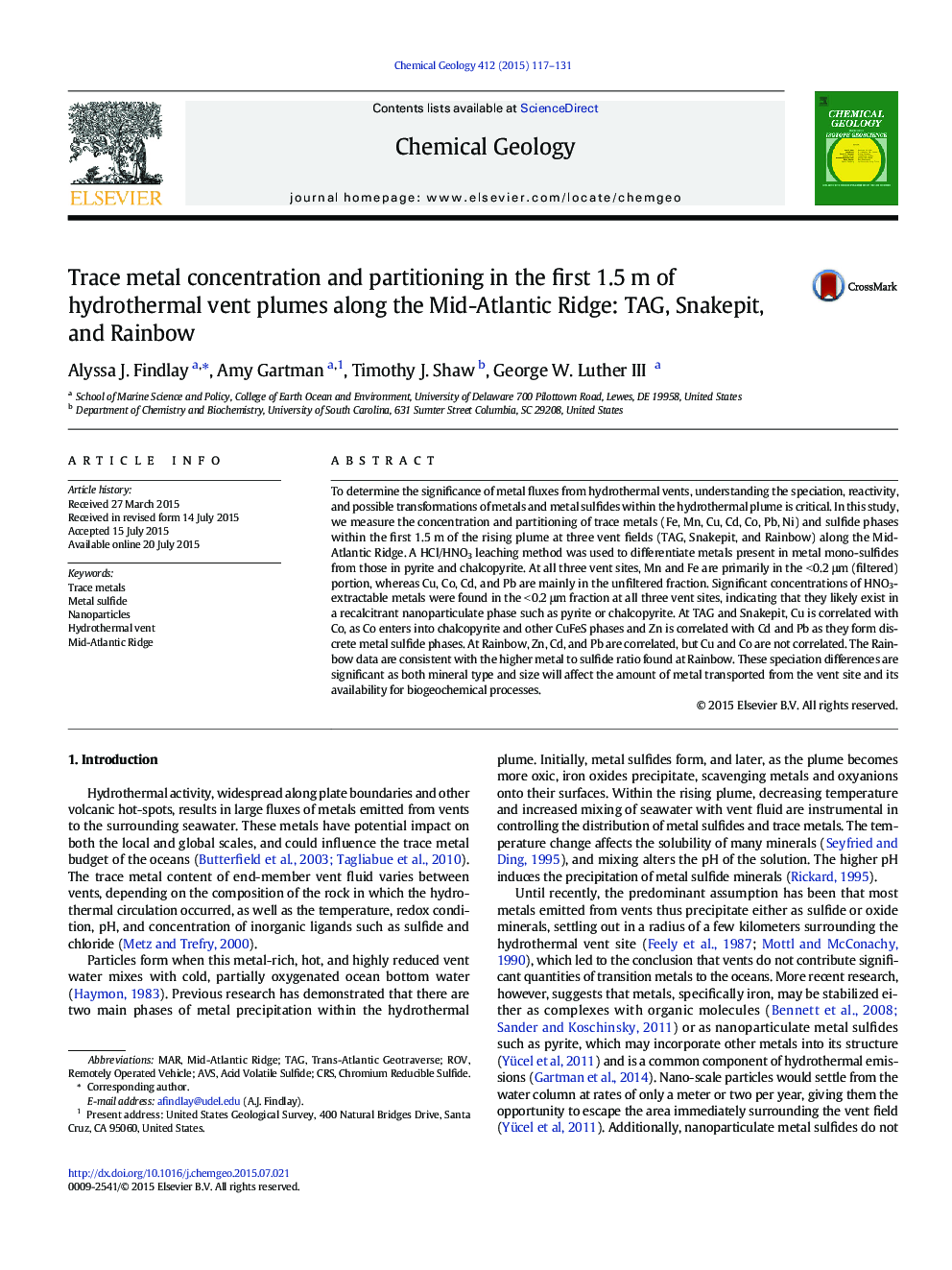| کد مقاله | کد نشریه | سال انتشار | مقاله انگلیسی | نسخه تمام متن |
|---|---|---|---|---|
| 4698428 | 1637562 | 2015 | 15 صفحه PDF | دانلود رایگان |

• The first 1.5 m of buoyant plumes at three hydrothermal vent fields along the Mid-Atlantic Ridge was studied.
• The partitioning of metals into sulfides differed between sites.
• Significant concentrations of metals < 0.2 µm were soluble only in HNO3, likely in pyrite or chalcopyrite nanoparticles
To determine the significance of metal fluxes from hydrothermal vents, understanding the speciation, reactivity, and possible transformations of metals and metal sulfides within the hydrothermal plume is critical. In this study, we measure the concentration and partitioning of trace metals (Fe, Mn, Cu, Cd, Co, Pb, Ni) and sulfide phases within the first 1.5 m of the rising plume at three vent fields (TAG, Snakepit, and Rainbow) along the Mid-Atlantic Ridge. A HCl/HNO3 leaching method was used to differentiate metals present in metal mono-sulfides from those in pyrite and chalcopyrite. At all three vent sites, Mn and Fe are primarily in the < 0.2 μm (filtered) portion, whereas Cu, Co, Cd, and Pb are mainly in the unfiltered fraction. Significant concentrations of HNO3-extractable metals were found in the < 0.2 μm fraction at all three vent sites, indicating that they likely exist in a recalcitrant nanoparticulate phase such as pyrite or chalcopyrite. At TAG and Snakepit, Cu is correlated with Co, as Co enters into chalcopyrite and other CuFeS phases and Zn is correlated with Cd and Pb as they form discrete metal sulfide phases. At Rainbow, Zn, Cd, and Pb are correlated, but Cu and Co are not correlated. The Rainbow data are consistent with the higher metal to sulfide ratio found at Rainbow. These speciation differences are significant as both mineral type and size will affect the amount of metal transported from the vent site and its availability for biogeochemical processes.
Journal: Chemical Geology - Volume 412, 27 September 2015, Pages 117–131